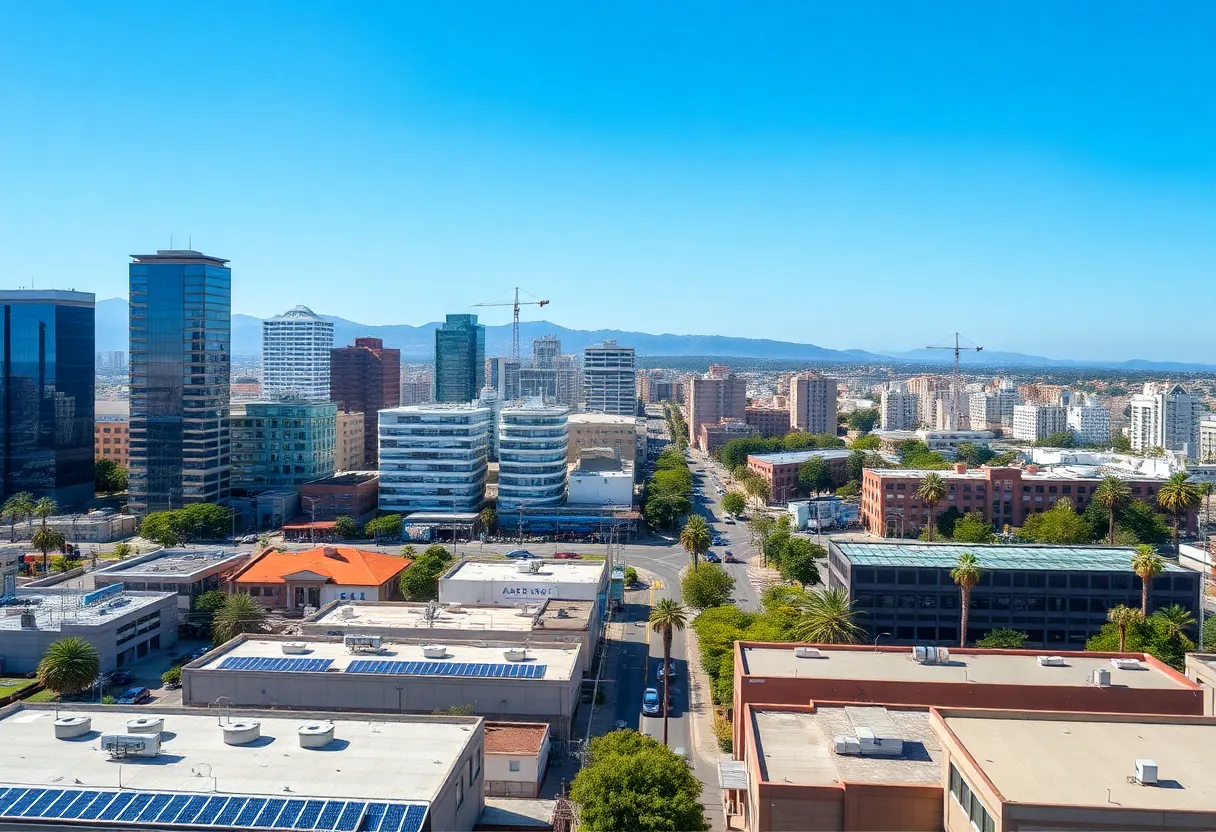California, September 9, 2025
News Summary
California business groups are calling for a postponement on the reauthorization of the cap-and-trade program, citing the need for more comprehensive discussions before the September 12 deadline. Originally approved in 2006, this program is crucial for achieving the state’s climate goals, including carbon neutrality by 2045. With emissions accounting for two-thirds of California’s total, experts warn that reforms are necessary to meet future greenhouse gas reduction targets. The California Chamber of Commerce advocates for careful evaluation over rushed legislative action.
California business groups are calling for lawmakers to postpone the reauthorization of the cap-and-trade greenhouse gas emissions reduction program before the legislative session’s deadline on September 12. The current legislation is seen as crucial for California’s climate change initiatives, which aim for carbon neutrality by 2045.
The cap-and-trade program, originally approved in 2006, is set to continue until 2030. It has become a significant mechanism in the state’s effort to cut down greenhouse gases, currently responsible for about two-thirds of California’s emissions. However, recent discussions have highlighted a growing concern among business leaders over the lack of timely legislative action.
The California Chamber of Commerce expressed its disappointment regarding the situation, advocating for more in-depth debates rather than a hurried reauthorization before the deadline. Jennifer Barrera, the organization’s president and CEO, emphasized the importance of ensuring a sustainable future for the state’s economy.
California’s Governor Gavin Newsom supports extending the program until 2045 and hopes to achieve its renewal by the legislative session’s end. However, experts are warning that without necessary reforms, California may not meet its future greenhouse gas reduction goals: a 40% cut by 2030 and at least an 85% reduction by 2045.
Recent analyses indicate that to reach the 2045 carbon neutrality goal, California must increase its annual emission reductions from 2.5% to approximately 8.8%. This shift would require a robust cap-and-trade program, which has seen a decline in revenue due to unsold credits at auctions, causing a $3 billion loss over the past year. This decrease is further complicating California’s budget deficit.
Several critics have argued that the current cap-and-trade structure needs significant modifications, particularly around revenue allocation and environmental equity. Concerns were raised about proposed uses of cap-and-trade funds, which include projects like the high-speed rail system rather than immediate carbon reduction initiatives. Additionally, industry stakeholders are worried that eliminating free credits may push large emitters, like refineries, out of California, leading to job losses and increased consumer costs.
The California Air Resources Board is currently assessing potential changes to the program in response to this feedback. Various environmental advocacy groups are also pushing for any reauthorization to ensure strong emissions limits and fair enforcement that protects vulnerable communities impacted by pollution.
The Legislative Analyst’s Office has recommended lawmakers take the necessary time to evaluate their policy decisions on the cap-and-trade program’s future, given the substantial implications for the environment and economy.
As discussions continue, it remains crucial for all parties involved to navigate the complexities of balancing climate commitments with economic viability in California.
FAQ
- What is California’s cap-and-trade program?
- The cap-and-trade program is a market-based system established to reduce greenhouse gas emissions through the buying and selling of emissions allowances.
- When was the cap-and-trade program enacted?
- The program was originally authorized in 2006, with plans set to last until 2030.
- What are California’s targets for greenhouse gas reductions?
- California aims for a 40% reduction in emissions by 2030 and at least an 85% reduction by 2045.
- Why are business groups expressing concern over the cap-and-trade reauthorization?
- Business groups are concerned about the potential impact of rushed legislative action, the necessity of reforms, and the economic implications for various industries.
- What recommendations have been made regarding the cap-and-trade program?
- The Legislative Analyst’s Office has suggested that lawmakers need to thoroughly evaluate their policy choices regarding the reauthorization to fully understand its impacts.
| Feature | Detail |
|---|---|
| Original Enactment Year | 2006 |
| Expiration Date | 2030 |
| Projected Carbon Neutrality Target | 2045 |
| Current GHG Reduction Target | 40% by 2030 |
| Required Annual Emission Reduction Increase | From 2.5% to 8.8% |
| Revenue Loss Over the Past Year | $3 billion |
| Proportion of California’s GHG Emissions | Approximately two-thirds |
| Deadline for Legislative Session | September 12 |
Deeper Dive: News & Info About This Topic
- Bloomberg Government: California Business Groups Urge Delay on Cap-and-Trade Extension
- Wikipedia: Cap-and-trade
- Los Angeles Times: California’s Cap-and-Trade at a Crossroads
- Google Search: California’s cap-and-trade program
- Politico: California Climate Newsletter
- Encyclopedia Britannica: Cap-and-trade
- Politico Pro: Assembly’s Draft Cap-and-Trade Language Proposes Moderate Changes
- Google News: California Cap-and-trade 2025
- Carbon Credits: The Ultimate Guide to Understanding Carbon Credits
- Planetizen: California’s Cap-and-Trade Program in the Air
- Sacramento Bee: Op-Ed on California’s Cap-and-Trade

Author: STAFF HERE SAN DIEGO WRITER
The SAN DIEGO STAFF WRITER represents the experienced team at HERESanDiego.com, your go-to source for actionable local news and information in San Diego, San Diego County, and beyond. Specializing in "news you can use," we cover essential topics like product reviews for personal and business needs, local business directories, politics, real estate trends, neighborhood insights, and state news affecting the area—with deep expertise drawn from years of dedicated reporting and strong community input, including local press releases and business updates. We deliver top reporting on high-value events such as Comic-Con International, San Diego County Fair, and San Diego Pride Festival. Our coverage extends to key organizations like the San Diego Regional Chamber of Commerce and United Way of San Diego County, plus leading businesses in biotechnology, healthcare, and technology that power the local economy such as Qualcomm, Illumina, and Scripps Health. As part of the broader HERE network, including HEREAnaheim.com, HEREBeverlyHills.com, HERECostaMesa.com, HERECoronado.com, HEREHollywood.com, HEREHuntingtonBeach.com, HERELongBeach.com, HERELosAngeles.com, HEREMissionViejo.com, and HERESantaAna.com, we provide comprehensive, credible insights into California's dynamic landscape.





